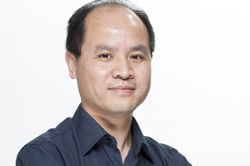Enabling the offshore wind supergrid
MEDOW (Multi-terminal DC grid for offshore wind) is a Marie-Curie action with two purposes: training a new pool of researchers and cross-fertilising expertise in DC grids; and studying operational issues related to their adoption in offshore wind farms. These include questions related to DC power flow, DC relaying protection, steady state operation, dynamic stability, fault‐ride through capability, and impacts of DC grids on the operation of AC grids and power market. A few months before the end of the project in March 2017, MEDOW coordinator Jun Liang of Cardiff University discussed early results and the project’s expected impact on the realisation of the supergrid. How is a multi-terminal DC Grid a key enabler for the European Super Grid? High-Voltage Direct Current (HVDC) technology has already proven to be a highly efficient solution to transmit large amount of electric power over long distances and in applications such as carrying offshore wind power to shore, cross country interconnectors and AC grid reinforcements. As the number of these point-to-point connections increases, it could be beneficial to connect them directly rather than through AC corridors, forming a multi terminal DC (MTDC) grid. This is raising interest in the pan European Super Grid, where more renewable energy resources (RES) can be integrated. Furthermore, the number of HVDC connections is not so small in Europe, with a foreseen growth of 30+ HVDC connections within the next five years, starting with undersea connections, but later on even with longer overhead lines. The only possible solution to meet energy needs in the long-term lies in MTDC networks connecting the whole continent and the RES in the North Sea via offshore grid — which is commonly called the European Super Grid. The key benefit of HVDC grids is a chance to obtain very reliable, mostly clean energy almost everywhere in Europe. Moreover, the power lines can be either ‘invisible’ (cables), or rather compact compared to standard AC lines. What can you tell of the project's most notable results so far? The MEDOW project’s most important contribution is how it managed to bring together academia and industries to work on MTDC grid development, towards a sustainable Europe. In addition, this collaborative project provides the platform to train and develop early career researchers in order to fill the shortage of skilled and experienced work force in the field of power systems. The MEDOW project’s contribution to the technical community can be summarised with one book on HVDC grids, one patent (pending acceptance), 60+ technical research papers in top academic journals and notable international conferences along with engagement with local communities. Most of the research output has received high appreciation from industry partners. They are very keen to take up these outcomes and use them in practical applications. What are your plans for building on or disseminating the project's results after its end, if any? Europe’s energy needs are changing along with economic and policy developments. To support this trend, MEDOW sought to promote its findings and results so as to make the super grid a reality. This has been achieved through engagement with industrial partners and organisations like Friends of the Super Grid — a Brussels-based association of international companies that promotes the policy agenda for a European supergrid. The success of the project has motivated the consortium to consider applying for future funding to continue the project under MEDOW 2. Furthermore, we are also involved in the Vision2020 Network, a pan-European research network for SMEs and universities, where we head the Energy cluster. This should help us engage with an even greater number of academics, companies and institutions as they seek to address the big issues around Europe’s energy management. One of your main objectives was to foster greater ties between industry and academia. How did that work out? The participation of industrial partners is crucial for projects like MEDOW, which aims at introducing real world applications. Their insights on recent trends, developments and practical implications are vital for proper research directions. In this regard, it has been very rewarding to work together with top-notch cross border industrial and technical partners on this project. It has really allowed us to push the technology barriers and to bridge the gap between industry and academia through the validation of our ideas. In addition to this, the secondments provided for each of the MEDOW researchers with industry partners allowed them to reach out to a wider community outside academia. This opportunity gave them a chance to interact, network, and collaborate with the respective technical partners, and get an insight into the culture and environment of geographically dispersed institutions. Overall, do you expect the project results to impact the development of offshore DC grids? Yes, I do believe the outcomes and findings of the MEDOW project can be used as a roadmap for the development of future offshore DC grids. Through the MEDOW project we were able to tackle most of the uncertainties standing in the way of technological progress and to nurture a strong workforce capable of dealing with the new age mixed AC/DC power system. The outputs of the MEDOW project can be effectively used to reduce the timeframe for the realisation of a pan European grid. MEDOW Funded under FP7-PEOPLE CORDIS project page
Countries
United Kingdom



